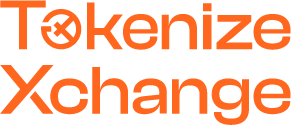An Easy Guide on Blockchain Incentive Structures
The incentive theory of motivation is a fundamental rationale for human behavior. It argues that incentives or ‘rewards’, can encourage a specific, and/or desirable behavior. Is this a psychology essay? No. But neither are you going to finish that last cookie because it tastes repulsive. You’re ‘motivated’ to eat it because it’s delicious, and that’s your incentive; your reward.
So how can we apply this theory to blockchain networks?
Incentives govern everyday human behavior
In decentralized systems with no controlling authority, incentive structures are especially important as it ensures that the network is functional and secure. This means that users are encouraged to follow the ‘rules and be on their “best behavior” through incentives (i.e. financial rewards in the form of cryptocurrencies), therefore preserving the authenticity of transactions on that network.
>>>Read more: Beginner’s guide: Blockchain consensus mechanism<<<
More importantly, cryptocurrencies’ independence from a central authority (e.g. a central bank) means that it needs its own unique form of monetary policy — an incentive structure to ensure the currency’s relative stability and value.
This brings us to the subject of Token Economics or Tokenomics
Creating value in a self-sustaining and decentralized network
There is a subtle difference between the terms ‘coin’ and ‘token’. Coins are cryptocurrencies with their own blockchains (e.g. Bitcoin) while tokens are built on existing blockchains (e.g. ERC-20 tokens on the Ethereum blockchain).
Tokenomics, as its name suggests, is the economic design of a blockchain ecosystem. Think of it as the microeconomics of the decentralized world.
A good example of tokenomics would be Bitcoin’s supply cap at 21 million coins. By having a finite supply of coins, and reducing the number of mining activities by half every 4 years, it results in the economic phenomenon we know as ‘scarcity’, which then causes an inflationary effect — or an upwards pressure on its price.
See the ‘economics’?
Check out this useful infographic by He3Labs:
As aforementioned, it’s imperative to have sound incentive structures in decentralized networks. It motivates users to act in accordance with the network’s rules, and encourages a healthy exchange of ‘value’ in the network, much like how the value of traditional currencies are derived.
Here’s a simple breakdown of the role of incentive structures in the token economy:
- Distribution — E.g. How are validators/miners incentivized or rewarded with cryptocurrencies, therefore, maintaining the authenticity of transfers and the overall trust in the blockchain.
- Price Stability — Ensuring that price and supply levels are kept in check so that users are incentivized to use a particular token.
- Governance — User decision-making rights. E.g. Incentivising users to put their cryptocurrencies at stake in the PoS (Proof of Stake) consensus mechanism.
>>>Read more: Beginner’s guide: Blockchain for the uninitiated<<<
Keep Tokenizing! Till next week.
Here at Tokenize, we strive to provide the best possible platform for cryptocurrency trading. More importantly, we believe in sharing our passion for all things blockchain, crypto, and DeFi.
Stay tuned for the next Tokenize Research articles with Tokenize Xchange!
Subscribe to Tokenize Blog
Get updated with our guides, tips, and market news to help you in your investment.
Follow Tokenize Exchange on Facebook, Telegram, Medium, Twitter, Instagram.
Disclaimer
All content produced by Tokenize Exchange is intended solely for educational purposes. This should not be taken as financial or investment advice. Individuals are advised to perform due diligence before purchasing any crypto as they are subject to high volatility.





